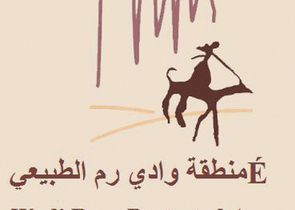Nature Conservation 4/2010 — 14. 9. 2010 — International Nature Conservation — Print article in pdf
Wadi Rum – the Place of Lawrence of Arabia
krajina Lawrence z Arábie

The development of nature conservation and protected areas in the Middle East has started as late as during the second half of the 20thcentury. One of the most important large-size protected areas in that region is the Protected Area Wadi Rum in the Hashemite Kingdom of Jordan.
According to the last 2003 UN List of Protected Areas, it has been established already in 1965; according to official Jordanian sources in 1997. Presently, the Protected Area totals 720,000 hectares. Wadi Rum is situated in the extreme South of Jordan, at the northwest border of the Arabian Desert, 360 km S of the capital Amman, and 60 km NE from Aqaba the governorate of which is responsible for the Protected Areas management. For Wadi Rum – a system of broad rocky valleys and narrow canyons – the reddish colour of the landscape is its most characteristic feature. This is caused by brownish and violet--red Cambrian and Ordovician conglomerates and sandstones overlying older dark granites. Even the desert is a living ecosystem: a team of ecologists studying the Protected Area during 1999–2000 has recorded the occurrence of 183 species of vascular plants, 26 mammals, 119 birds, 36 reptiles and 77 arthroponds. The area is an important station during bird migration, for the birds of pray in particular. The managament of the Protected Area is under technical leadership of the Jordanian Royal Society for the Conservation of Nature. Wadi Rum, also well-known as an operational base for the British officer Thomas Edward Lawrence in 1917, is now a popular tourist destination. A new visitor centre with the seat of the PA Administration has been opened recently, 7 km N of the Rum Village, the only permanent bedouin settlement within the Protected Area. Also 154 interesting archeological sites are preserved in the area. The visit to Wadi Rum may be combined with a visit to the famous Petra siuated not too far away.
Název připojené galerie
Quisque egestas velit non nulla fermentum, aliquet pharetra nunc malesuada. Nullam molestie vel diam non tincidunt. Sed pulvinar lacinia nunc et consectetur. Duis varius leo ac ex scelerisque, ullamcorper eleifend massa consectetur. Nullam in metus ac arcu pellentesque venenatis ac id lorem. Nulla nec ipsum sed enim sodales blandit a sit amet ex.







